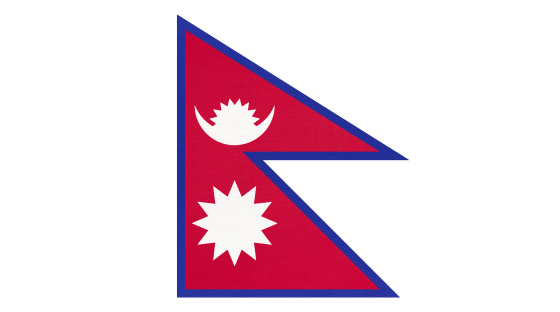-
Services
-
Software Project Delivery
-
Services
-
Solutions
-
Technologies
-
-
Network
-
Discover
-
Regions
-
Industries
-
Must-Read Guide
-
2026 Global Software Outsourcing Rates and Trends GuideDiscover why rates are just one aspect of the Accelerance Global Software Outsourcing Rates & Trends Guide, which offers valuable insights into the software development landscape.
-
-
-
Resources
-
Our Resources
-
Newest White paper
-
Aviation Ecosystem Modernization: A Holistic Approach for Meaningful TransformationModernize aviation by integrating people, processes, technology, and data
-
-
New eBook
-
 The True Cost of Software DevelopmentHidden costs can wreck your budget. Our new eBook breaks down the true cost of outsourcing—get your copy to stay ahead.
The True Cost of Software DevelopmentHidden costs can wreck your budget. Our new eBook breaks down the true cost of outsourcing—get your copy to stay ahead.
-
-
Featured White paper
-
Flow & Process OptimizationIn this white paper, you'll learn to streamline workflows, improve change management, and accelerate results.
-
-
-
About
-
About Accelerance
-
Our History
-
Accelerance: Our HistoryThere's great talent everywhere and great teams everywhere, which is the basis of the Accelerance model.
-
-
Software Without Borders
-
New Episode Every Week!Tune into our podcast Software Without Borders, the essential listen for technology leaders and business owners in the software sector who crave insights from the industry’s top minds.
-
-
Andy's Book
-
Synergea: A Blueprint for Building Effective, Globally Distributed Teams in the New Era of Software DevelopmentPeople are first and locations are secondary when it comes to software development success.
-
-
- Client Reviews
Nepal

Overview
Home to Mt Everest, or Sagarmatha to Nepalis, the world’s highest peak, this mountainous country in the Himalayas relies heavily on international tourism and trade with India, both of which have been disrupted by rumbling border tensions. An emerging software outsourcing destination, Nepal has well-trained programmers and engineers and has taken impressive steps towards improving access and equality in education in recent years. However, the economic outlook remains uncertain, with a fall in agricultural and industrial production and an exodus of young people emigrating in search of job opportunities overseas. On a more positive note, tourism is bouncing back, reaching one million international visitors in 2023, the highest number recorded since the pandemic.
The Accelerance Global Network is the most curated list of high-quality global teams ever assembled.
22hrs
Time Travel (From NY)
Average flight time from NY to the major cities in the country.
59
Partner Innovation capability
The score reflects investment in STEM progrms and IT funding by country.
67
Partner Skill Level
Level of workforce skills and quality of education, including factors such as digital literacy, interpersonal skills, etc.
65
Partner Global Competitiveness
National productivity based on 12 core pillars, including government policy, infrastructure, economic stability, etc.
Low
Software Outsourcing Readiness
Overall rating, based on the maturity of the tech sector, socio-political conditions, and on-the-ground research by Accelerance.

Talent Pool & Education
Technology is one of the fastest-growing sectors in Nepal but it remains a fledgling industry, with only a handful of large companies operating at a more sophisticated level. The country has well-trained programmers and engineers and impressive steps have been taken towards improving access and equality in education in recent years. However, progress has been slow on the government’s Digital Nepal Framework, which prioritizes hard infrastructure and IT investment.
Pursuing an education in foreign countries has become a huge status symbol among Nepalis, leading to a brain drain of talent offshore to the US, Canada, Australia, and the UK. Private and government-funded universities have seen a sharp decline in student enrollment, reflecting concerns about political instability, corruption, economic uncertainty, and lack of opportunities in their home country.
Language
Nepali is the official language, but Nepal is one of the Asian countries where English is spoken as the main commercial language. Widely used in business dealings, it’s most prevalent among city dwellers in the capital Kathmandu. English is also commonly spoken in the tourism, government and education sector, where it is a medium of instruction in schools and universities.

Economic Outlook
The economy slowed markedly in 2022/23, partly reflecting a tightening of monetary policy to curb credit growth. A rebound is expected in 2024/25 as the noose is gradually loosened, with the International Monetary Fund forecasting a 5% rise in GDP. The lagged impact of lifting import restrictions will benefit the wholesale and retail trade, and boost the service sector, while the continued expansion of hydroelectric production through the commissioning of new projects should carry stronger growth in the industrial sector.
International travel rose by 41% in 2023. However, the World Bank paints a less rosy picture, citing stagnant wages, high inflation, inadequate investment, low private sector confidence, growing corruption and scandals, the exodus of youth to foreign countries, and abrupt changes in policies. A rising number of Nepali students are choosing to study abroad after leaving high school, lured by the prospect of wider employment opportunities, higher earnings prospects, global exposure, better living standards, and political and economic stability. Half of the population in Nepal is under 25 and 70% is under 40.
Political Conditions
Political volatility continued during 2024. Nepal has had 14 governments since abolishing its 239-year-old monarchy in 2008 and becoming a republic. In March 2024, Prime Minister Pushpa Kumar Dahal forged a new Communist coalition that saw Dahal's Maoist Center party join forces with the Communist Party of Nepal, ousting its previous partner, the centrist Nepali Congress. However, in July, Dahal lost a vote of confidence in the House of Representatives, leading to the formation of a new government with K.P. Sharma Oli, chairman of the Communist Party of Nepal, as Prime Minister, heading a coalition with Nepali Congress (NC), the largest party in Parliament, plus some smaller parties.
Power sharing, political discontent, ideological differences, underperformance, and pressure to restore Nepal to a Hindu state have been cited by political commentators as factors contributing to the shift in power dynamics. The re-emergence of alliances on the left may tilt foreign policy further toward Beijing, potentially affecting Nepal’s partnerships with other key players, such as the United States.
On the international front, recent tensions with India and China de-escalated in 2023 as bilateral talks with both countries resulted in commitments to several shared economic and industrial projects. A pilot project to export 40mw of power to Bangladesh through India will open up a corridor for energy exports to multiple countries. Other positive developments include the registration of the country's first same-sex marriage and the opening of an international airport in Pokhara, supported by Chinese financing.
Learn more about our customer stories.
Looking for a customer story in a specific technology or industry? Discover compelling customer narratives within a specific technology or industry that resonate with your unique software development needs.
